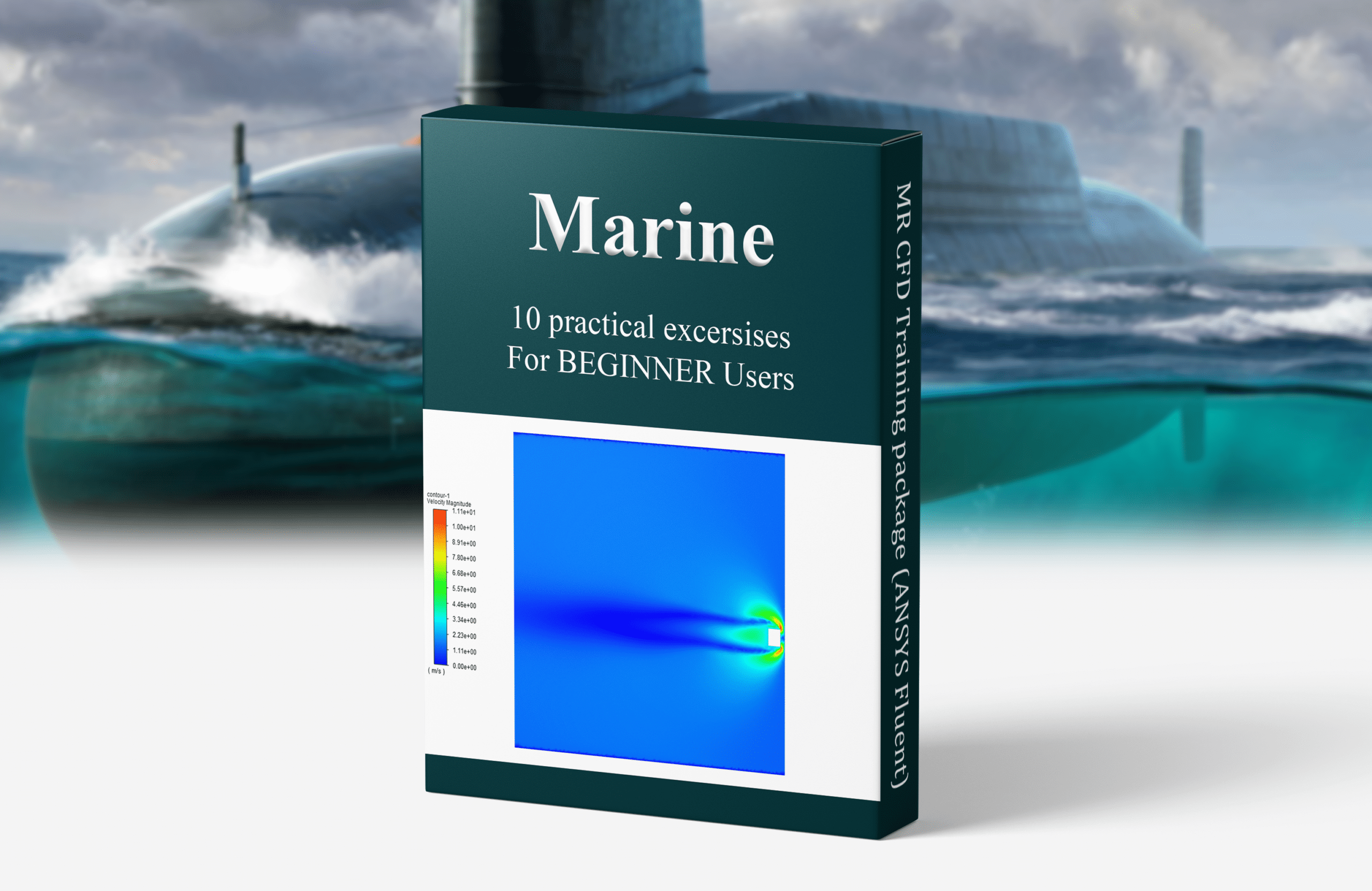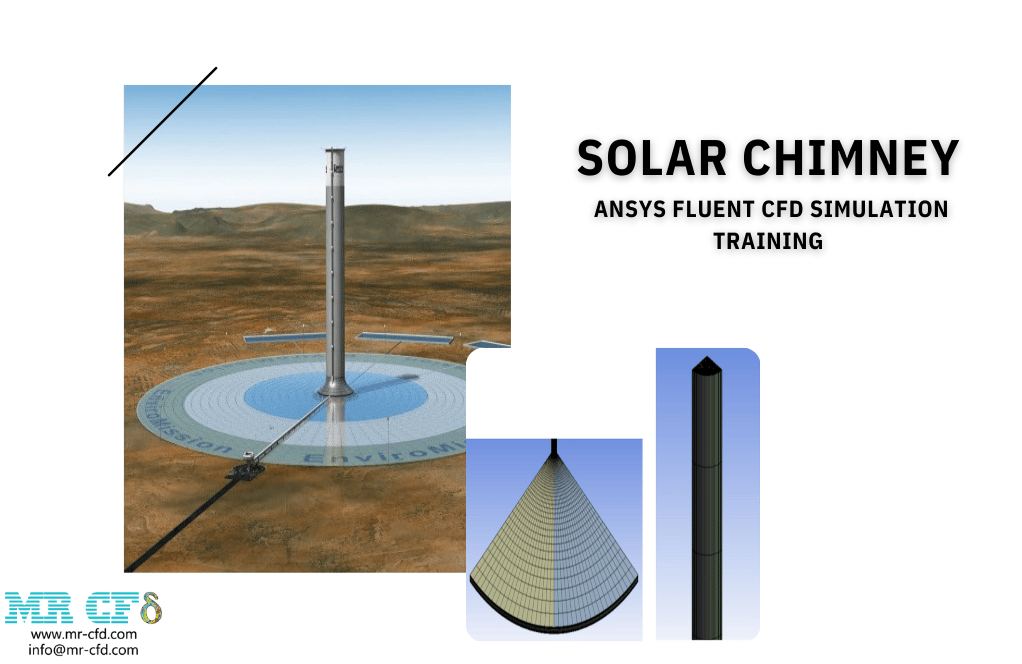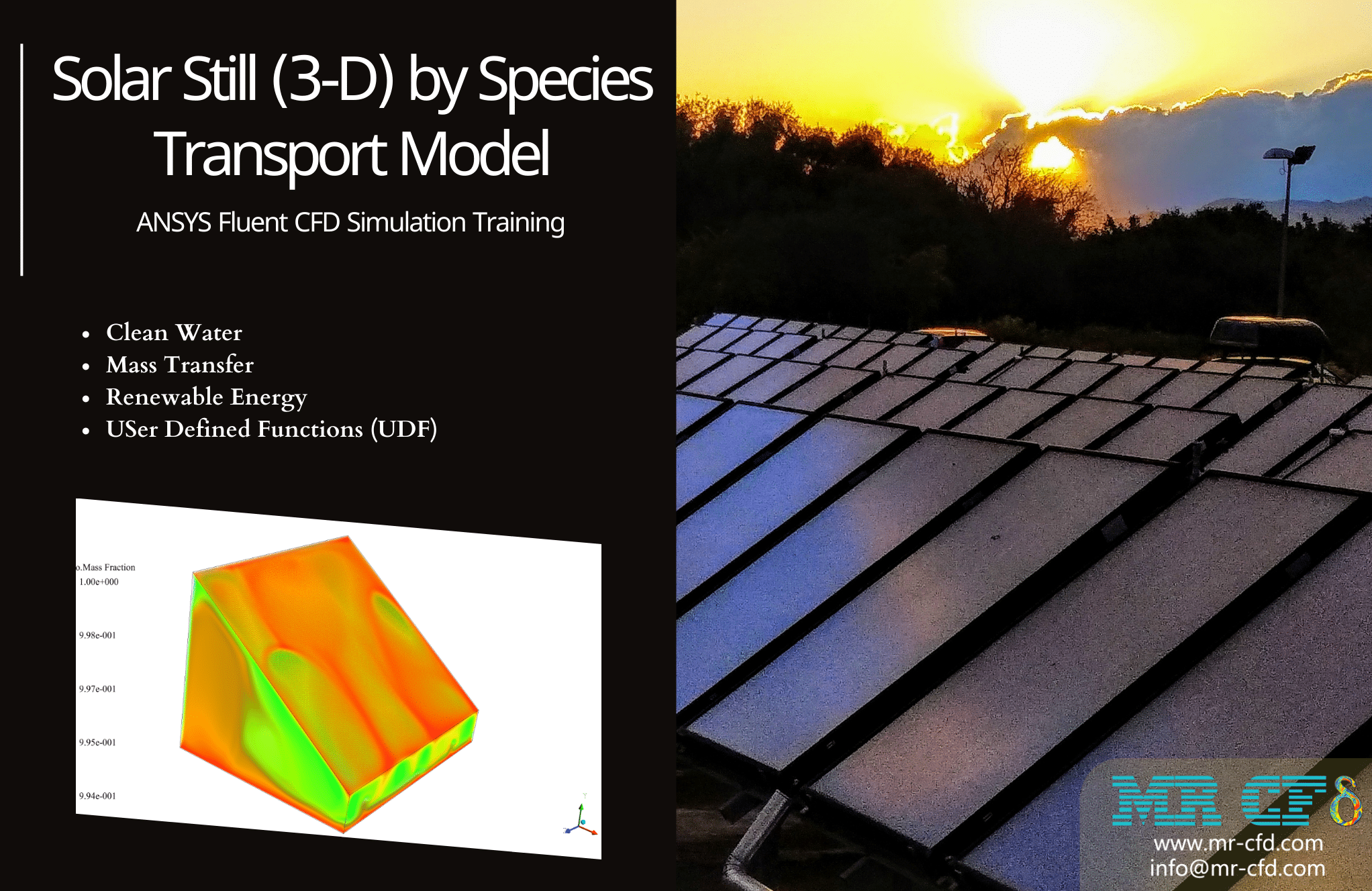Marine Engineering CFD Training Package for Beginners, 10 Learning Products
$259.00 $129.50 Student Discount
- Offshore Pipeline Considering Hydrodynamic Forces
- Sea Robot Motion
- Water Turbine (Horizontal Axis & Vertical Axis)
- FSI Analysis
- Short Wave in the Sea
- Jet Ski
- Falling Objects into Water
To Order Your Project or benefit from a CFD consultation, contact our experts via email (info@mr-cfd.com), online support tab, or WhatsApp at +44 7443 197273.
There are some Free Products to check our service quality.
If you want the training video in another language instead of English, ask it via info@mr-cfd.com after you buy the product.
Description
Marine Engineering CFD Simulation Training Package by ANSYS Fluent, 10 Practical Exercises For Beginners
This Training Package includes 10 practical exercises that are numerically simulated by ANSYS Fluent software for BEGINNER users in the field of Marine engineering.
Marine engineering is a branch of engineering that deals with the construction as well as the operation of mechanical equipment for seagoing craft, docks, and harbor installations. The basic job of a Marine engineer is to design, build and maintain vehicles/structures used on or around water. Marine engineers are specialist technical professionals who design, develop, build, install, inspect, and maintain the propulsion systems, engines, pumps, and other pieces of technical equipment that make boats and other maritime vessels function effectively. Marine engineering is the engineering of boats, ships, submarines, and any other marine vessel. Here it is also taken to include the engineering of other ocean systems and structures – referred to in certain academic and professional circles as “ocean engineering.”We start the training package with 2 practical exercises for BEGINNER users.
Practical exercise number 1 simulates the flow of seawater around offshore pipelines. The wave motion of the seawater on the pipelines creates drag and lift forces. Therefore, the location of these transmission pipelines must be in optimal condition to withstand less hydrodynamic forces. In project number 2, the moving of a robot (cube) in water is simulated. The water enters the inlet boundary with a velocity of 1.5m/s while the robot moves towards this boundary with a velocity of 3m/s. The dynamic mesh model is activated and smoothing and remeshing options are enabled.
Study number 3 investigates the water flow on the horizontal axis water turbine (HAWT) blades so that the purpose of the problem is to investigate the distribution of velocity and pressure on the wall of the blade. There are two areas around the blades, including a cylindrical area just around the blades and a large area around the cylinder. The flow of water in the large outer space behaves like a normal flow, while in the cylindrical region around the blades, the rotational flow is caused by the rotational motion of the blades. Problem number 4 simulates the water flow around a vertical axis water turbine (VAWT) submerged in water using the dynamic mesh method. The water turbine is from the category of vertical axis turbines and is of the Darrieus type; So the axis of the turbine is perpendicular to the direction of water flow.
Practical exercise number 5 simulates the movement of a spherical ball in water flow. We perform this simulation using FSI (fluid-solid interaction) method. In this simulation, a computational area is designed in the form of a horizontal tube filled with water flow. Problem number 6 simulates the movement of a submarine robot inside a canal containing water flow. The dynamic mesh method has been used to simulate the horizontal movement of this robot inside the channel. In this simulation, a two-dimensional channel is designed to flow at a speed of 1.5 m.s-1. In project number 7, a short wave in the sea is simulated by ASYS Fluent software.
Study number 8 investigates the water flow around a vertical water turbine considering unsteady CFD simulation. In the present case, it is assumed that the turbine blades are affected by the flow of the passing fluid; that means, the fluid flowing through the turbine blades imposes forces on the turbine blades and these forces cause deformation of the body of these blades. In project number 9, an attempt has been made to investigate the effect of the movement of a jet ski on the interface of two fluids (water and air). The computational domain consists of an inlet wherein the water enters with a mass flow rate of 50000Kg/s and a pressure outlet. The multi-phase VOF model is activated for solving multi-phase flow equations and the standard k-epsilon model is exploited to account for the turbulence in fluid flows.
Two cubes falling into the liquid are simulated in tutorial number 10. In general, it is essential to study the motion of objects in liquids. The fall of the cubes due to the acceleration of gravity helps a lot to understand the phenomenon of sloshing.














Jamar Klocko –
I appreciated the variety of topics covered in this training package. The exercises were engaging and incremental in complexity, which greatly improved my understanding of marine engineering and CFD in ANSYS Fluent.
MR CFD Support –
Thank you for your positive review! We’re delighted to hear that the training package with progressive exercises helped enhance your grasp of marine engineering and CFD in ANSYS Fluent. It’s our aim to provide an effective learning experience, and your feedback is a confirmation of our efforts.
Mrs. Everette Wyman Jr. –
I just finished going through the Marine Engineering CFD Training Package for Beginners and wanted to say that each of the exercises was impressively practical and immediately relevant to real-world marine applications. The progression from basic simulations to more complex scenarios provided a solid foundation for understanding fluid dynamics in marine engineering. Particularly, the simulations involving dynamic meshing techniques and multiphase flow models were fascinating and very well-explained. It was a delight to learn how to model water and air interface interactions and grasp the basics of computational fluid dynamics in such an engaging way.
MR CFD Support –
We are thrilled to hear that you found the Marine Engineering CFD Training Package for Beginners helpful and engaging! It’s wonderful to know that the exercises provided you with a solid understanding of fluid dynamics in the context of marine applications, and that the practical scenarios enhanced your learning experience. We strive to make our learning products as relevant and informative as possible. Thank you for choosing our training package, and we hope it serves you well in your future marine engineering endeavors!
Marge Adams IV –
The Marine Engineering CFD Training Package taught me so much about flow dynamics around marine structures and vehicles. It was particularly interesting to practice with the simulations of structures being subjected to real-life marine conditions. A great resource for beginners like me who are looking to get into marine engineering and CFD simulations.
MR CFD Support –
Thank you for your positive feedback! We’re glad that the training package provided valuable insights and practice to enhance your understanding of marine engineering and computational fluid dynamics. We hope these skills will serve you well in your future endeavors in the field. If you have any further questions about the exercises or need more resources, feel free to reach out to us.
Ms. Samantha Roob –
This training package has everything I needed! The gradual progression from simple offshore pipeline simulations to complex sloshing phenomena with falling cubes has solidified my grounding in marine engineering CFD. Great work MR CFD on a comprehensive beginner’s package.
MR CFD Support –
We’re delighted to hear that our Marine Engineering CFD Training Package has provided you with such a valuable learning experience! At MR CFD, we strive to offer thorough and progressive educational materials for all enthusiasts starting their journey into computational fluid dynamics. Thank you for choosing our package, and we wish you further success in your CFD endeavors!
Avis Blick Jr. –
I just finished the Marine Engineering CFD Training Package, and the range of practical exercises was incredibly helpful for understanding the basics. The step by step progression really built on my existing knowledge and made learning complex concepts far more manageable.
MR CFD Support –
We are delighted to hear that our Marine Engineering CFD Training Package was able to assist you effectively. Thank you for sharing your positive experience and we’re glad to know the step-by-step approach was helpful for your learning process. If you have any further feedback or need additional resources, please feel free to reach out!
Frida O’Kon –
The Marine Engineering CFD Training Package is a game-changer for beginners like me! The step-by-step approach and detailed simulations made complex concepts accessible and enjoyable to learn. Especially the simulations on the interaction between water flow and turbines provided a solid practical understanding of marine engineering dynamics. The projects are well-structured and immensely helpful in building foundational skills.
MR CFD Support –
Thank you for the positive feedback! We’re thrilled to know that our training package has effectively contributed to your understanding of marine engineering and that you’ve found the simulations to be practical and engaging. We’re here to provide support and enrich your learning experience, and it’s great to hear that our efforts are appreciated. If you ever need further assistance or more learning resources, don’t hesitate to reach out!
Cleora Effertz –
I just completed the Marine Engineering CFD Training Package, and I’m impressed with the comprehensive knowledge I’ve gained! The real-world applications like offshore pipeline analysis and water turbine simulations have given me a solid foundation in marine engineering principles. The step-by-step approach made it much easier to understand complex concepts, and working through practical exercises was beneficial. Highly recommend these learning products to any beginner in the field!
MR CFD Support –
Thank you for your positive feedback! We’re thrilled to hear that our Marine Engineering CFD Training Package has provided you with valuable knowledge and experience in the field. It’s great to know that our practical exercises have enhanced your understanding of marine engineering. We appreciate your recommendation and wish you the best in your future simulations and marine engineering endeavors.
Alexandria Mueller –
I’ve always been fascinated by marine engineering, and this training package has been an incredible resource for me! The step-by-step practical exercises made the complex principles much more approachable. I can now confidently simulate marine scenarios. The way the training breaks down topics like wave interactions with offshore pipelines and the dynamics of water turbines is superb. A big shoutout for including that robot simulation and the FSI usage for spherical ball movement in water—truly enlightening!
MR CFD Support –
Thank you so much for your kind words! We are delighted to hear that our Marine Engineering CFD Training Package helped demystify complex concepts and bolstered your confidence in performing marine simulations. It’s wonderful to know that the practical exercises, especially those involving the robot and the spherical ball with FSI, provided you with clear insights. Your enthusiasm about the content reassures us that we are on the right path. Please continue exploring and learning with our resources!
Madaline Pagac MD –
The Marine Engineering CFD Training Package sounds comprehensive. I am quite eager to go through the exercises for better understanding. Does this package cater to absolute beginners too, or some foundational knowledge in ANSYS Fluent is required?
MR CFD Support –
This training package is specifically designed for BEGINNER users in the field of Marine engineering and includes gradual learning from the basics. It starts with simpler exercises and works up to more complex simulations. Foundational knowledge in ANSYS Fluent is not required as the package is tailored for those new to the software and marine CFD simulations.
Elwyn Goyette I –
I was able to learn incredibly useful basics of marine engineering CFD through this package! The variety of exercises encompassed different, crucial aspects of maritime simulations which gave me an excellent foundation.
MR CFD Support –
We’re thrilled to hear that our Marine Engineering CFD Training Package has provided you with a valuable foundation in maritime simulations. Thank you for your positive feedback, and we wish you the best in applying these skills in your future projects!
Julius Jacobson –
The Marine Engineering CFD Training Package seems like an excellent resource for beginners. I especially like the variety of practical exercises included, it covers a broad spectrum of marine engineering scenarios.
MR CFD Support –
Thank you for your positive feedback! We’re delighted to hear that you find our Marine Engineering CFD Training Package for beginners useful and comprehensive. Our goal is to provide a diverse set of exercises to give learners a solid understanding of various marine applications using ANSYS Fluent. We hope these exercises will greatly enhance your skills and knowledge in the field of marine engineering!
Fern Hammes –
I had a great time working through the Marine Engineering CFD Training Package. I particularly enjoyed the exercises related to the movement of the robot in water and the simulation of currents around offshore pipelines. I found the materials were well-structured and instructions clear, which made it easier for a beginner like me to follow along!
MR CFD Support –
We appreciate your positive feedback on the Marine Engineering CFD Training Package for beginners! It’s fantastic to hear that you enjoyed the exercises and found the materials to be understandable and well-organized. Your success with the practical exercises, especially with the robot movement simulation and the offshore pipeline currents, is very encouraging to us. Thank you for choosing our training products, and we are delighted to have helped you in your learning journey. If you require further assistance or wish to explore more advanced topics, our team is always ready to support you.